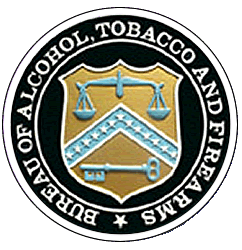FFL Compliance Inspections Notice

Washington, DC – -(AmmoLand.com)- The Bureau of Alcohol, Tobacco, Firearms and Explosives (ATF), pursuant to the Gun Control Act (GCA) and the Federal firearms regulations, is responsible for licensing persons engaging in a firearms business. With certain exceptions, the GCA allows ATF to conduct one warrantless, annual compliance inspection of a federal firearms licensee (FFL). The purpose of the inspection program is to educate the licensee about regulatory responsibilities and to evaluate the level of compliance. Compliance inspections also serve to protect the public in that they promote voluntary internal controls to prevent and detect diversion of firearms from lawful commerce to the illegal market.
During inspections, ATF industry operations investigators (IOI) review records, inventory, and the licensee’s conduct of business. To assist in meeting and maintaining compliance, investigators also provide instructional and educational materials about the requirements of the law and regulations and best business practices.
Compliance failures, which constitute violations of law and regulation, commonly disclosed during the inspection process include failure to verify purchaser eligibility; inability to account for firearms received and disposed; failure to ensure firearms traceability due to improper recordation of firearms receipt and disposition; failure to properly document firearms transfers; and failure to report multiple sales of handguns. These types of violations, among others, can hinder the FFL’s ability to support law enforcement criminal investigation efforts.
Proper and timely recordkeeping by FFLs is critical to the success of a crime gun trace and is required for all firearms acquired and transferred by licensees. Failing to account for firearms is a serious public safety concern because unaccounted firearms cannot be traced. During compliance inspections conducted in 2007, ATF investigators identified nearly 130,000 firearms that FFLs could not locate in inventory or account for by sale or other disposition. By working with industry members, IOIs reduced this number to approximately 31,000 firearms that FFLs could not account for. As such, ATF investigators improved the success rate of potential firearms traces of previously unaccounted firearms by 76 percent. Although this is a significant improvement, over 30,000 firearms remained missing and pose a threat to public safety.
When violations of the law and regulations are disclosed during an inspection, a Report of Violations is issued to the licensee that outlines the discrepancy and the requirements for corrective action. ATF also works to gain cooperation and compliance from FFLs by issuing warning letters and holding warning conferences. Despite these remedial actions, on rare occasions ATF encounters a licensee who fails to comply with the law and regulations and demonstrates a lack of commitment to improving his or her business practices. In such cases where willfulness is demonstrated, ATF’s obligation to protect pubic safety may require revocation of the federal firearms license.
In Fiscal Year 2007, ATF conducted approximately 10,000 compliance inspections. More than 40 percent of the licensees inspected were determined to be in full compliance with the law and regulations and no violations were cited. Approximately 100 federal firearms licenses were revoked or were denied renewal due to willful violations of the GCA. This figure is approximately 1 percent of the number of licensees inspected.
ATF investigators assist licensees in developing corrective actions when violations are identified and encourage licensees to constructively engage in the remediation process. In this way, ATF attempts to bring licensees into compliance before it becomes necessary to take administrative action against the licensee. When an ATF inspection results in a warning conference or potential revocation, the licensee is provided an opportunity to develop a written plan that details the steps taken to correct the problems identified and measures implemented to ensure future compliance.
To assist licensees in achieving and maintaining compliance, ATF conducts recall inspections on all licensees who have committed violations that warranted a warning conference. In 2007, recall inspections resulted in an overall 85-percent reduction in the total instances of violations. Recall inspections also resulted in a 78-percent reduction in disclosed prohibited sales and a 90-percent decrease in inventory discrepancies.
ATF’s focus is to help licensees avoid violations of the law and its implementing regulations. The Bureau prides itself on partnering with the firearms industry, especially regarding voluntary internal controls, to better protect the public. To that end, ATF continues to work closely with the firearms industry at all levels to ensure compliance, understand concerns, and help resolve perceived obstacles to compliance. ATF strives to educate licensees concerning their obligations under the law through open letters mailed to FFLs, information posted on ATF’s Web site, quarterly FFL newsletters, industry seminars, attendance at trade shows, and partnerships with industry associations. Licensees are provided the “Federal Firearms Regulations Reference Guide,” which includes laws, regulations, and other information about conducting a firearms business under federal law, and other publications such as the “Safety and Security Information for Federal Firearms Licensees.”
About:
ATF – A unique law enforcement agency in the United States Department of Justice that protects our communities from violent criminals, criminal organizations, the illegal use and trafficking of firearms, the illegal use and storage of explosives, acts of arson and bombings, acts of terrorism, and the illegal diversion of alcohol and tobacco products.
We partner with communities, industries, law enforcement and public safety agencies to safeguard the public we serve through information sharing, training, research, and use of technology.
